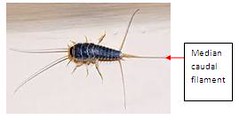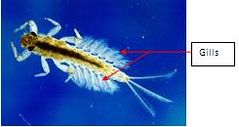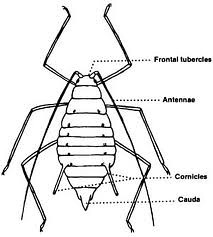Insect abdomen is the
third functional region of insect body. It is located behind the thorax and
contains 6-10 segments. There are various types of appendages arise from the
abdomen.
Cerci
Located close to anus.
-Blattodea: simple and
jointed cerci
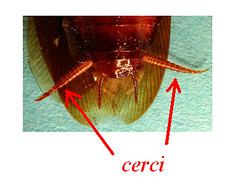 |
| Via ediacaran.mech.northwestern.edu |
-Orthoptera: simple
and not jointed cerci
-Dermaptera:
Sclerotized, forceps like cerci
 |
| Dermaptera forcep like cerci via gallurapestcontrol.com |
-Thysanura: Long
filamentous cerci
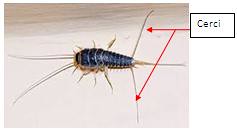 |
| Long filamentous cerci of Thysanura |
-Ephemeroptera larvae:
Wing like cerci that helps to move forward in water.
 |
| Wing like cerci -Ephemeroptera larva |
Styles
Can be seen in
Cockroach and Lepisma. It is regarded as the vestige of the walking limb.
 |
| via microscopy-uk.org.uk |
Median caudal filament
This is a thread like
projection arising from he center of the last abdominal segment between the
cerci.
Abdominal Prolegs
Can be seen in Lepidopera.
 |
| via entomology.umn.edu |
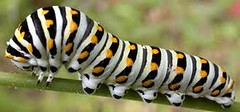
Abdominal Gills
These are respiratory
organs and found in nymphs of some aquatic insects.
Cornicles
These are located
dorsally on the abdomen as paired secretory structures.
Female External
Genitalia
Ovipositors are used
for oviposition and it is formed by the modification of 8-9 abdominal segments.
Thysanura, Orthoptera, Thysanoptera and some Hymenoptera insects contain true
ovipositors.
 |
| Ovipositor places egg inside caterpillar |
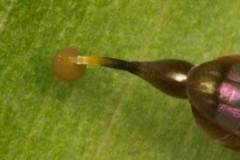 |
| Egg is released (naturecloseups.com) |
-The ovipositor is
modified as a poison injecting sting ( Wasps, bees..etc)
 |
| via amazingnature.us |
-Hind end of the
abdomen is extended to work as an ovipositor
Male genitalia
Modification of 9th
abdominal segment makes the copulatory organ of males which is consist of
aedeagus and pair of lateral claspers to grasp and hold the abdomen of the
female during mating.
